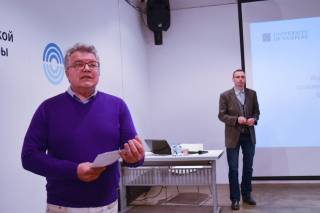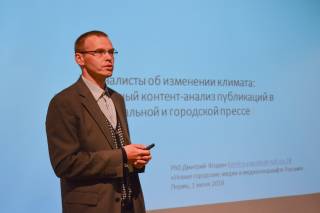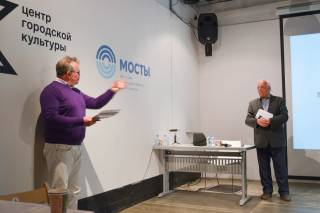 “New urban media” have markedly transformed the public sphere of modern Russian cities. How this happened and what to expect was discussed at the conference “New urban media in the media landscape of Russia” in Perm, Russia (June 1–2, 2018). The conference, hosted by Department of Journalism, Perm State University, consisted of theoretical discussions and reports of empirical studies, including those by TaRC members.
“New urban media” have markedly transformed the public sphere of modern Russian cities. How this happened and what to expect was discussed at the conference “New urban media in the media landscape of Russia” in Perm, Russia (June 1–2, 2018). The conference, hosted by Department of Journalism, Perm State University, consisted of theoretical discussions and reports of empirical studies, including those by TaRC members.
Since 2010–2012, dozens of apolitical media projects mushroomed in large urban centers around the country. For some, perhaps, this was an escape from the risky business of independent press. A more vocal opinion, though, linked it with the rapidly improved living standards and cultural self-consciousness among the so-called creative class and young professionals. New urban communities became passionate about unique city narratives, convenience of open spaces and development of leisure landscapes. It seemed that urban art, culture and lifestyle information unconsciously replaced the political role of traditional local journalism.
 Briefly, new urban media is a relatively new format of mass media that relies on digital technology and caters to specific tastes of urban youth. In Russia, this format is popular among people up to the age of 40–45, usually much younger than that. New urban media expand everyday experience of a large city by showcasing smaller events, hidden places, and quirky facts about local history; they help explore deserted territories, invite restoring polluted environments, and draw attention to ordinary people. Some variations of these media include moderated online city forums and social media groups; some take more advantage than others of user-generated content.
Briefly, new urban media is a relatively new format of mass media that relies on digital technology and caters to specific tastes of urban youth. In Russia, this format is popular among people up to the age of 40–45, usually much younger than that. New urban media expand everyday experience of a large city by showcasing smaller events, hidden places, and quirky facts about local history; they help explore deserted territories, invite restoring polluted environments, and draw attention to ordinary people. Some variations of these media include moderated online city forums and social media groups; some take more advantage than others of user-generated content.
 Panelists talked about differences between “old” and “new” media, raised issues pertaining to ethics and social responsibility, questioned economic models and power relations with local authorities. In that sense, new urban media are quite similar to traditional mass media and are still looking for other ways to monetize content, be independent and, ideally, profitable. The most exciting, for academics too, were the presentations by media professionals — editors, journalists and founders of “new urban media” from various cities in Ural region, Siberia, and the European Russia. The closing discussion, as organizers cleverly planned, shifted towards the major problem of all media organizations — the money. Ivan Kolpakov, editor-in-chief of Meduza, who began his career in one of the first urban media in Perm, lead the debate with distressing conclusions for most of the projects present. There are already too many players on the market, there are very few people who are willing to pay for media content.
Panelists talked about differences between “old” and “new” media, raised issues pertaining to ethics and social responsibility, questioned economic models and power relations with local authorities. In that sense, new urban media are quite similar to traditional mass media and are still looking for other ways to monetize content, be independent and, ideally, profitable. The most exciting, for academics too, were the presentations by media professionals — editors, journalists and founders of “new urban media” from various cities in Ural region, Siberia, and the European Russia. The closing discussion, as organizers cleverly planned, shifted towards the major problem of all media organizations — the money. Ivan Kolpakov, editor-in-chief of Meduza, who began his career in one of the first urban media in Perm, lead the debate with distressing conclusions for most of the projects present. There are already too many players on the market, there are very few people who are willing to pay for media content.
Upon the closing of the conference, TaRC welcomed plans for a joint publication and future exchanges and cooperation with the organizer and other participants. An important suggestion was to include comparative perspective, for example, by looking at similar phenomena in Finland and elsewhere in the world.
Conference home page: <http://urbanjournalism2018.tilda.ws/>.
Photos from the conference: <https://vk.com/album-167175342_254029883>.
Perm State University: <http://en.psu.ru/>.
Below is a video clip about the conference.

